

EASTER ORDERS ARE CLOSED!
Wishing everyone a Happy Easter


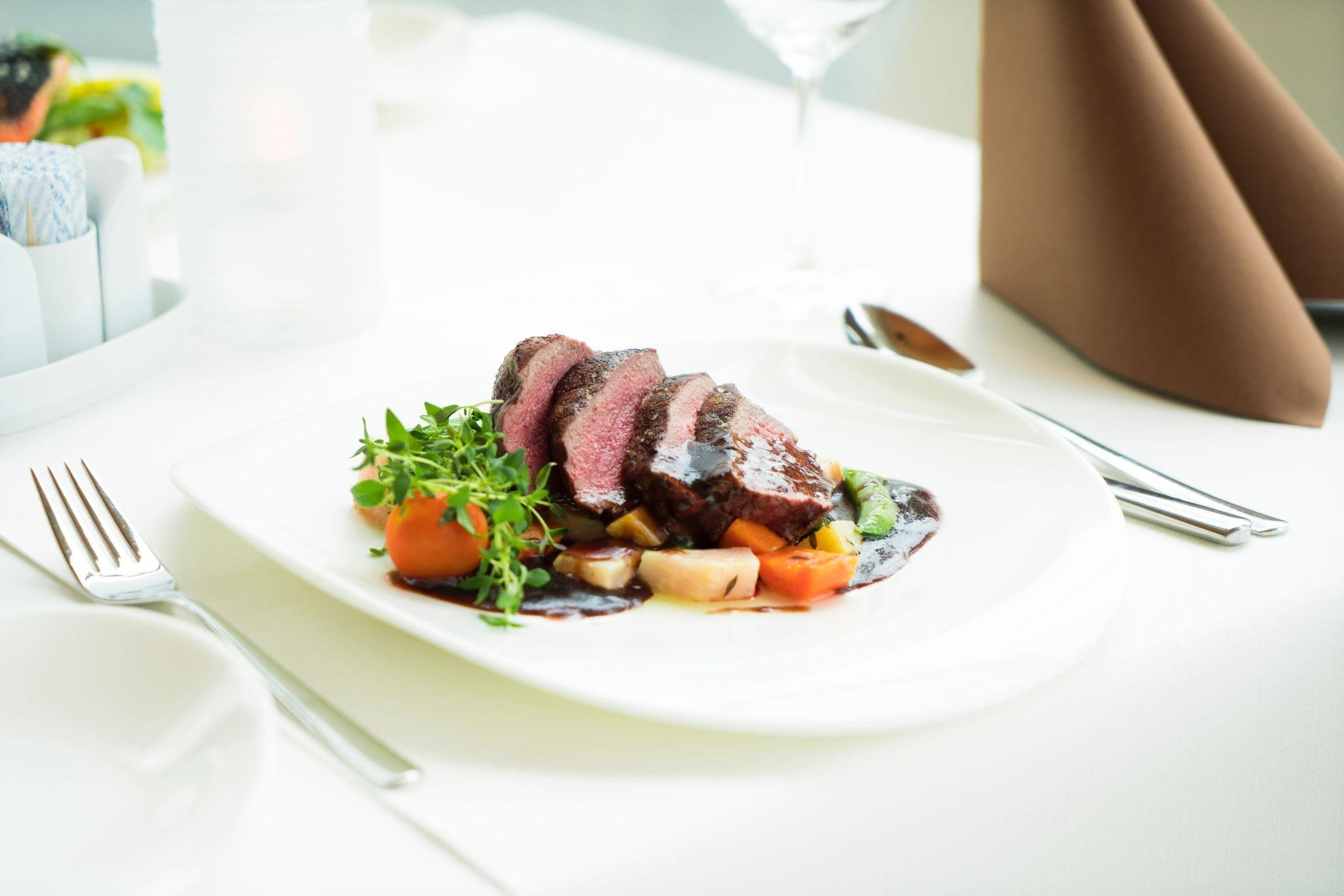
With steak on the table, it’s always fine dining.
Who doesn’t love a good steak? With some choice seasoning, the right mix of fat and lean can satisfy the most discerning palate. And though we all tend to have our favourite cut of steak, if you haven’t tried them all, you could very well be missing out on some sumptuous eats.
In this article, we’ll discuss the best cuts of steak, from the popular ribeye steak to underrated cuts like the hanger steak.
Each cut offers a unique blend of flavours and textures that tantalise the taste buds and—if prepared correctly—leave a lasting impression. But remember, the cut is only as good as the quality of the beef it comes from. No matter what you choose, you should always check the following:
Marbling refers to the small white flecks of fat that run through the meat. The more marbling a steak has, the more tender it will be. In other words, it’s what makes the steak juicy and flavourful.
Dry-aged steaks have been aged for several weeks, which allows the meat to develop a deeper flavour and become more tender. Wet-aged steaks are aged in vacuum-sealed packaging, which preserves the moisture in the meat and results in a milder flavour.
A good steak should be a deep red colour with a tight, firm texture. Avoid steaks that are brown or grey in colour, as these are signs that the meat is not fresh.
The ribeye steak is taken from the rib section of the cow. It is known for its rich, beefy flavour and incredibly tender texture, thanks in part to the marbling of fat throughout the meat. Being a well-exercised muscle, the rib can give a bit more chew than other cuts, but it nevertheless contributes to the intense beef flavour.
If you’ve heard of the Scotch fillet, it’s actually the same cut. The difference is that the ribeye has the bone and the Scotch fillet doesn’t.
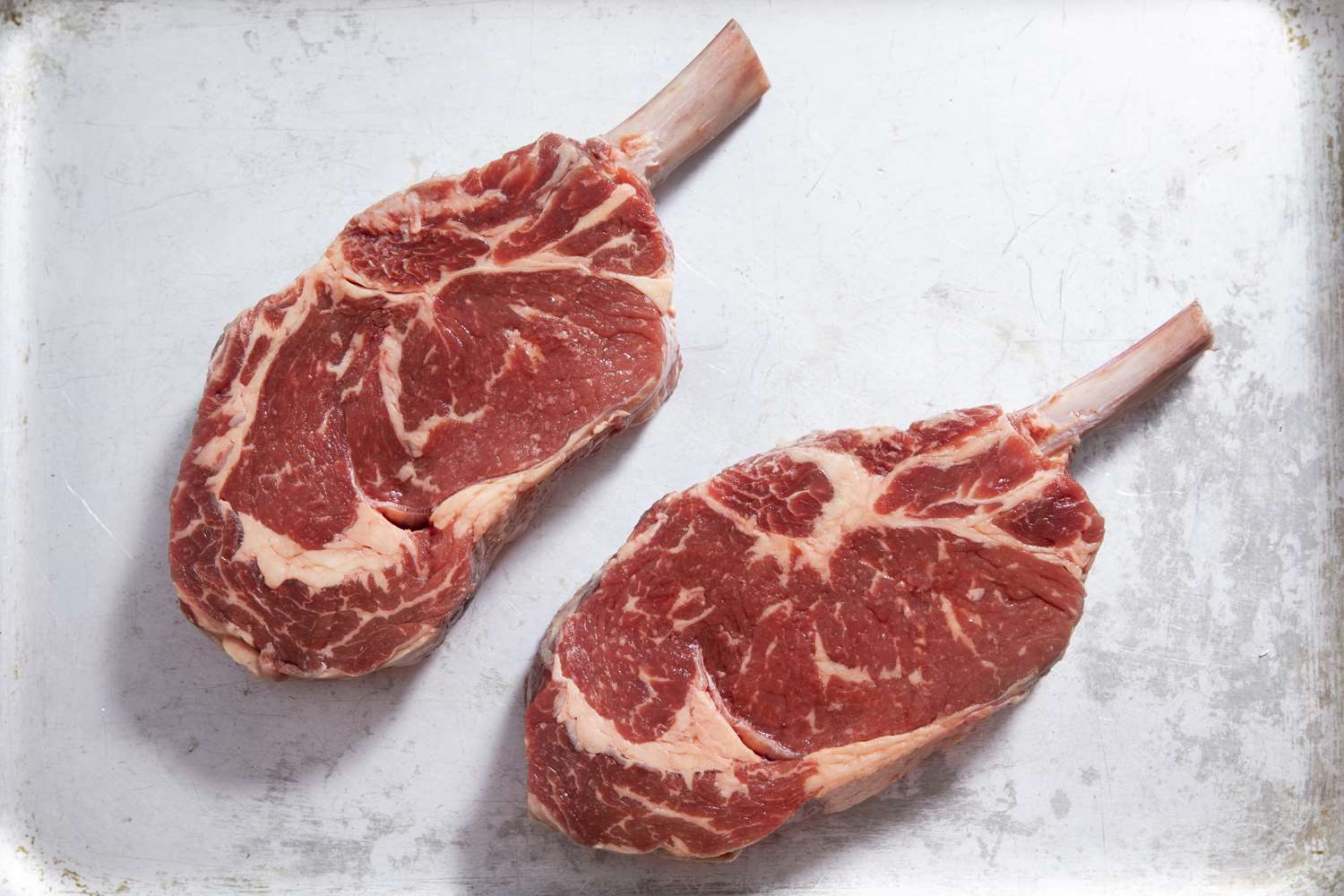
See the marbling in these giant ribeye cutlets?
The tenderloin steak is a long, cylindrical muscle located in the short loin section of the cow. Coming from a muscle that isn’t heavily exercised, this cut is very tender and almost melts in your mouth. It also has a buttery texture and mild flavour, making it a good choice for people who prefer a more subtle beef taste.
Often, tenderloin steak is cut into small, thick steaks that can be cooked by grilling, broiling, sautéing or pan-frying. Because of its leanness, it’s considered a healthier option compared to other cuts of steak.
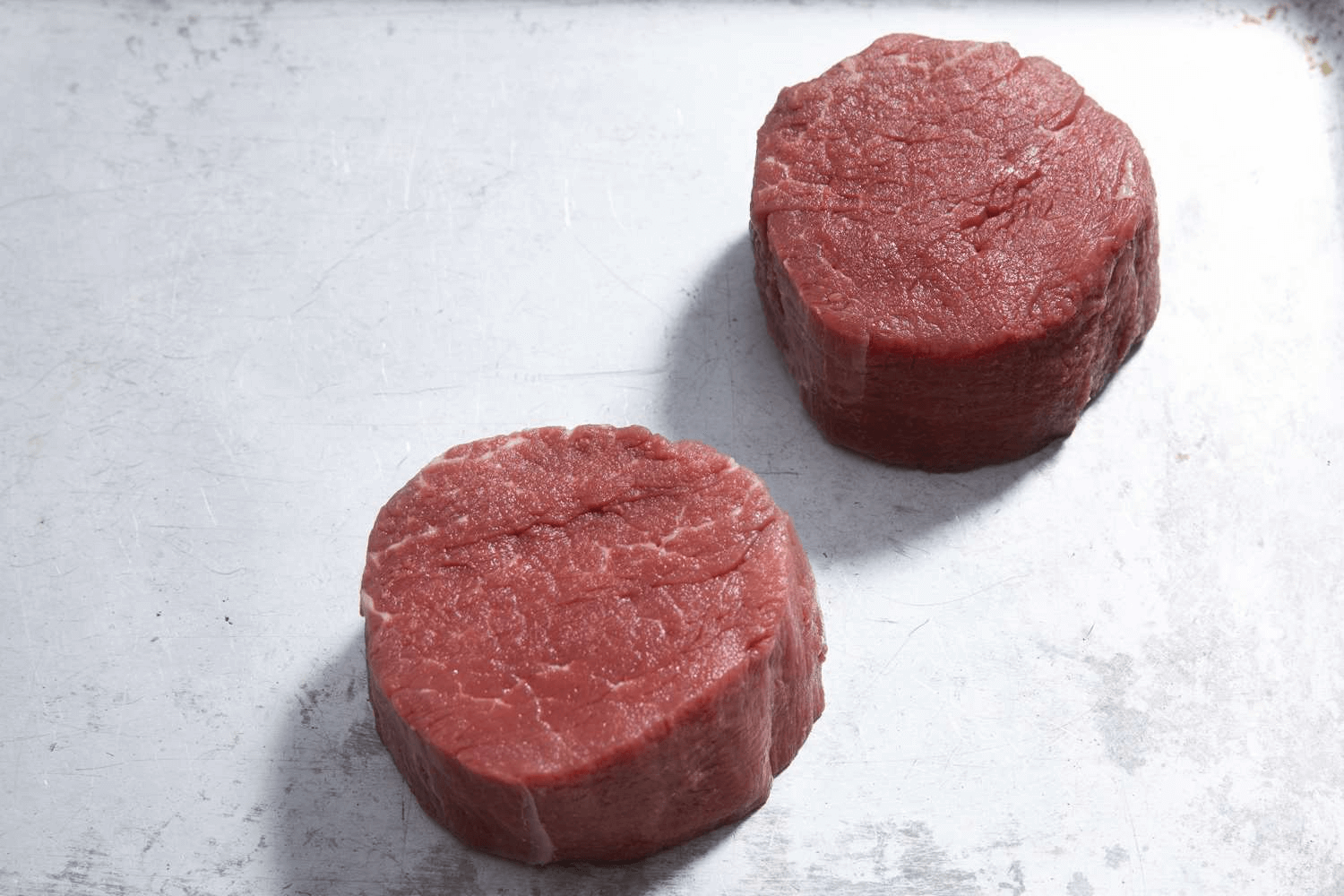
Get your beef tenderloin from some of the best farms across the country.
Many people confuse filet mignon with tenderloin, but the former is portioned out of the latter. If you want your steak extra tender, filet mignon is your choice cut. (It’s also considered one of the fancier cuts of steak.)
As the name suggests, top sirloin is taken from the top portion of the sirloin, which is located just behind the short loin. One of the things that makes it a good cut of meat is its balance of tenderness and flavour. It’s not as tender as the ribeye or filet mignon, but it’s still pleasantly tender and offers great flavour.
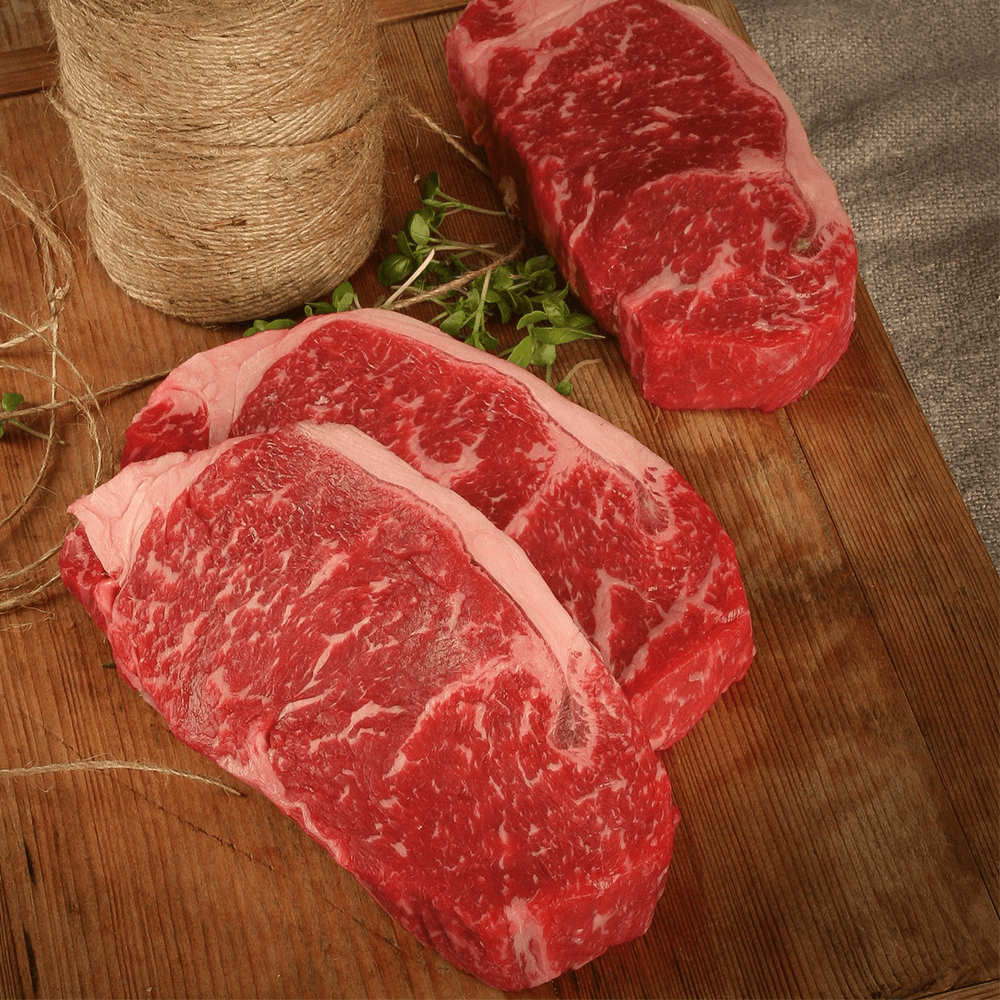
This signature sirloin steak makes for some of the most flavoursome beef in Australia.
The strip steak, also known as strip loin steak or New York strip, also comes from the short loin. It’s well-marbled, meaning it has a good balance of fat throughout the meat. The marbling adds a lot of flavour, and when cooked to the right temperature, the meat should be juicy and tender. It’s also one of the leaner cuts of meat, so it’s a good choice for mindful eaters.
The T-bone steak is a unique cut characterised by a T-shaped bone that separates the larger strip steak from the smaller tenderloin. It combines the tenderloin and the strip steak, resulting in a steak that has both a tender and a flavourful side. With moderate marbling, its fat keeps the meat moist and tender when being cooked.
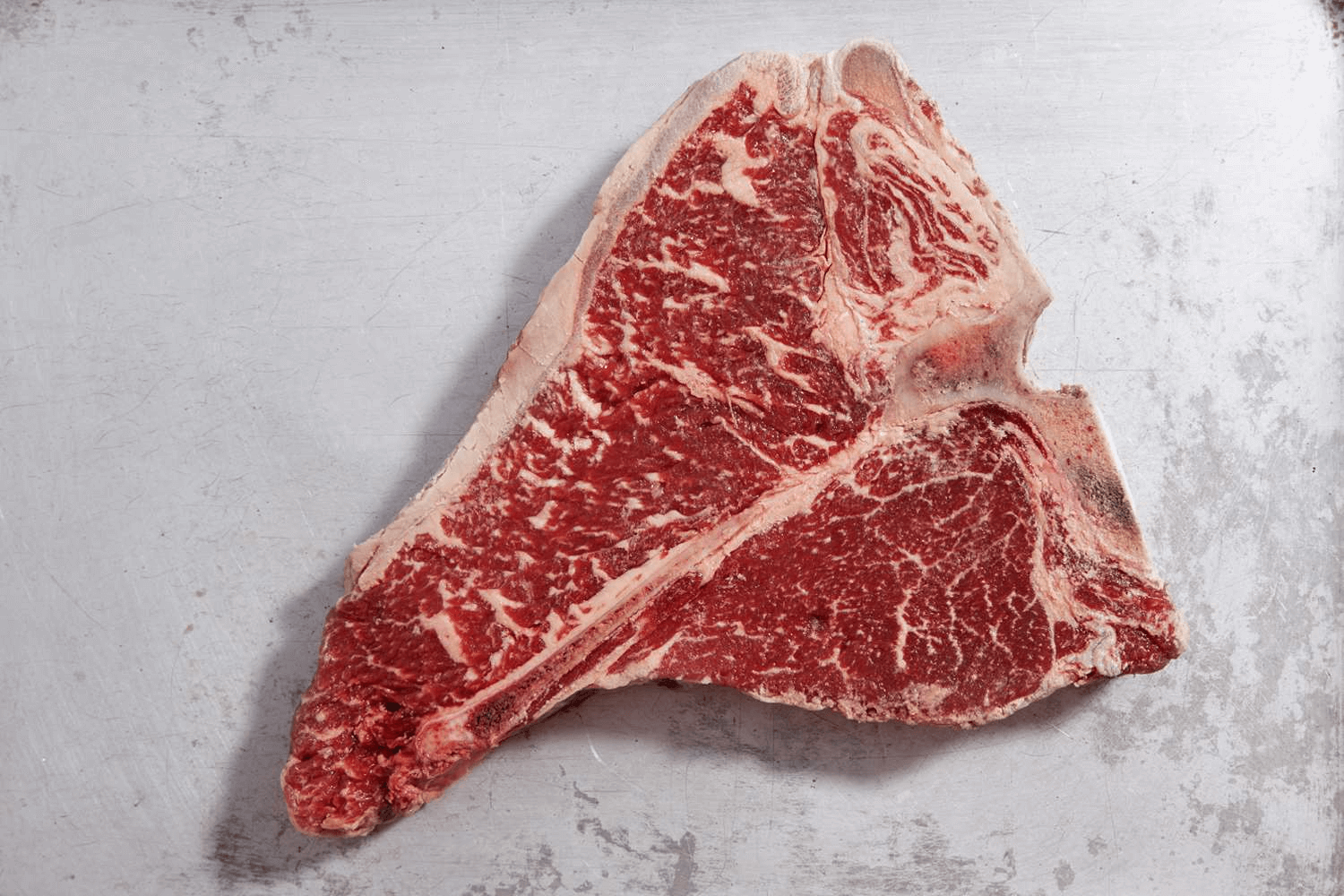
This T-bone pinnacle steak is perfectly marbled and primed for the grill.
Porterhouse steaks are similar to T-bone steaks and are, in fact, often mistaken for such. Cut from the rear end of the short loin, the porterhouse steak is slightly leaner than T-bone and has a delicious, beefy flavour. It’s also larger in size with a larger portion of tenderloin.
Also known as top blade steak, the flat iron steak is taken from the shoulder of the cow, specifically from the shoulder blade. It may not be as popular as other cuts of steak, but it’s well-marbled, which adds to its rich flavour and tenderness.
Having come from an area that gets a lot of exercise, the flat iron makes for a fairly lean cut. Some people refer to flat iron steak as butler’s steak or boneless top chuck steak.
An underrated beef cut, the hanger steak is taken from the plate of the cow, located near the diaphragm. It’s a flavourful and tender cut of beef that has a distinctive ‘V’ shape. While it’s generally easy to prepare, the hanger steak isn’t easy to find. That’s because there is only one hanger steak cut from each cow.
The hanger steak also goes by the name butcher’s steak because butchers would often keep it for themselves since it’s considered a delicacy.
The skirt steak has an intensely beefy flavour, with a characteristic grain that runs through the steak. This cut owes its rich taste to the diaphragm muscle, which is used a lot by the cow. The skirt steak is a bit chewier than other cuts, giving it a distinct texture and mouthfeel.
Sourced from the abdominal muscles of the cow, this cut is known for its lean yet flavourful profile. Its unique grain structure and marbling make it a perfect candidate for a variety of cooking methods, from traditional grilling or broiling to slow cooking.
The flank steak is often confused with the skirt steak. It also offers a strong, beefy flavour, but it’s less firm than the skirt.
While the best sides to serve with steak will always depend on personal preference and the flavours of the steak, some classic options include:
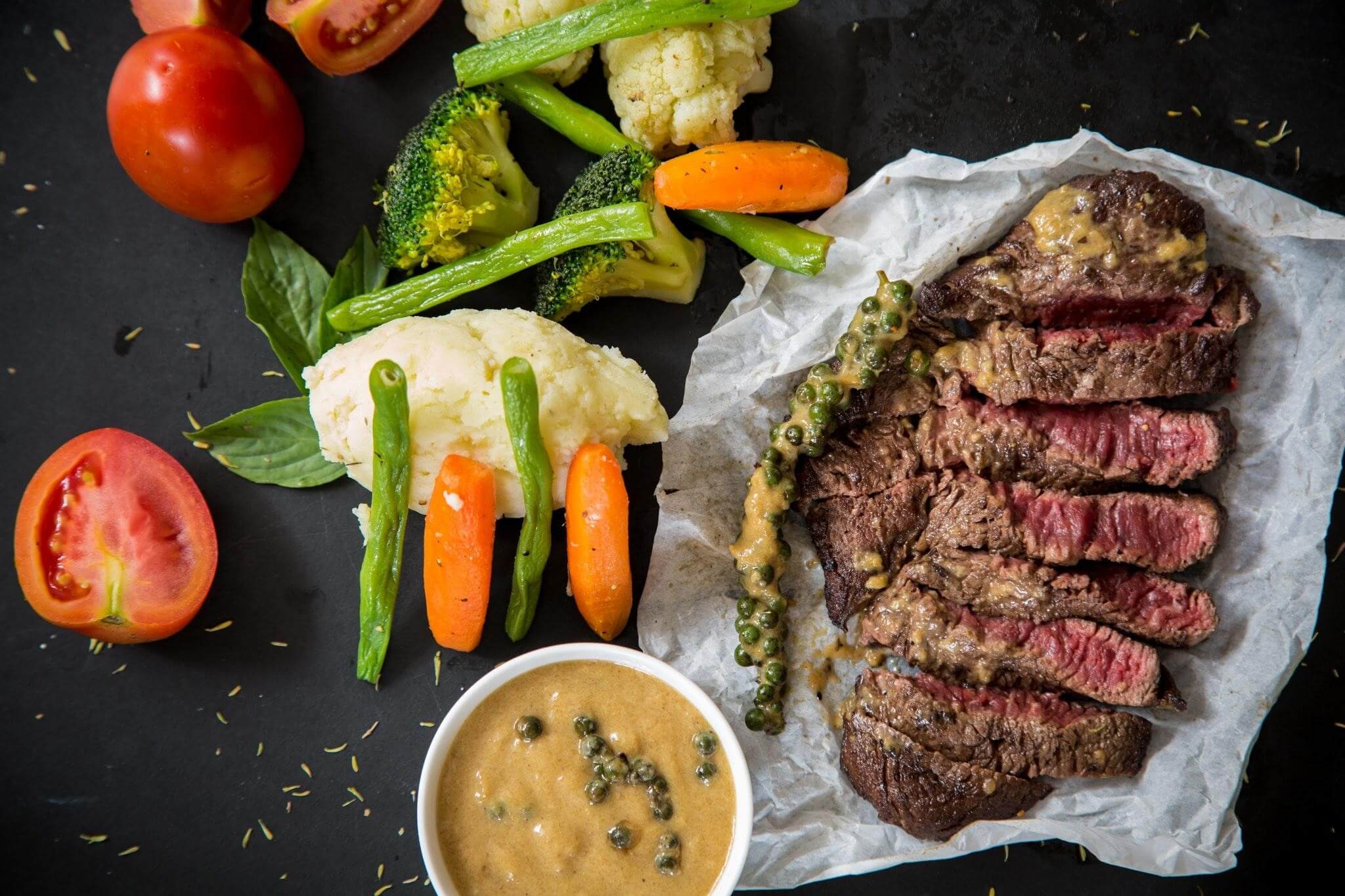
Steak lovers, choose your sides.
Ultimately, the best sides to serve with steak are those that complement the flavours of the steak and add variety to the plate. Which one of the cuts and sides we discussed do you like most?